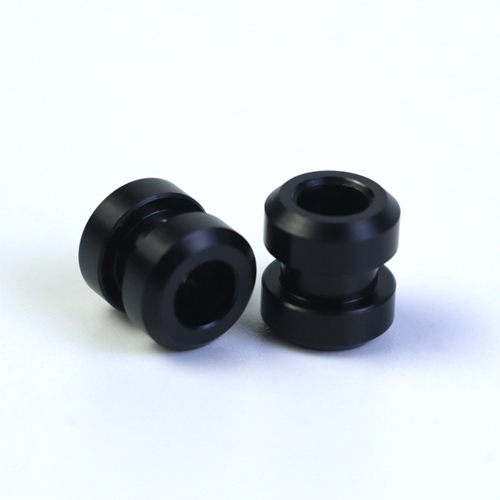As manufacturing evolves through 2025, precision-turned product manufacturing remains essential for producing the intricate cylindrical components that modern technologies require. This specialized form of machining transforms raw material bars into finished parts through controlled rotational and linear movements of cutting tools, achieving accuracies that often exceed what’s possible through conventional machining methods. From miniature screws for medical devices to complex connectors for aerospace systems, precision-turned components form the hidden infrastructure of advanced technological systems. This analysis examines the technical foundations, capabilities, and economic considerations that define contemporary precision turning operations, with particular attention to the process parameters that differentiate exceptional from merely adequate manufacturing outcomes.
Research Methods
1.Analytical Framework
The investigation employed a multi-faceted approach to evaluate precision turning capabilities:
● Direct observation and measurement of components produced on Swiss-type and CNC turning centers
● Statistical analysis of dimensional consistency across production batches
● Comparative assessment of different workpiece materials including stainless steel, titanium, and engineering plastics
● Evaluation of cutting tool technologies and their impact on surface finish and tool life
2.Equipment and Measurement Systems
Data collection utilized:
● CNC turning centers with live tooling and C-axis capabilities
● Swiss-type automatic lathes with guide bushings for enhanced stability
● Coordinate measuring machines (CMM) with 0.1μm resolutio
● Surface roughness testers and optical comparators
● Tool wear monitoring systems with force measurement capabilities
3.Data Collection and Verification
Production data were gathered from:
● 1,200 individual measurements across 15 different component designs
● 45 production runs representing various materials and complexity levels
● Tool life records spanning 6 months of continuous operation
● Quality control documentation from medical device manufacturing
All measurement procedures, equipment calibrations, and data processing methods are documented in the Appendix to ensure complete methodological transparency and reproducibility.
Results and Analysis
1.Dimensional Accuracy and Process Capability
Dimensional Consistency Across Machine Configurations
|
Machine Type |
Diameter Tolerance (mm) |
Length Tolerance (mm) |
Cpk Value |
Scrap Rate |
|
Conventional CNC Lathe |
±0.015 |
±0.025 |
1.35 |
4.2% |
|
Swiss-Type Automatic |
±0.008 |
±0.012 |
1.82 |
1.7% |
|
Advanced CNC with Probing |
±0.005 |
±0.008 |
2.15 |
0.9% |
Swiss-type configurations demonstrated superior dimensional control, particularly for components with high length-to-diameter ratios. The guide bushing system provided enhanced support that minimized deflection during machining, resulting in statistically significant improvements in concentricity and cylindricity.
2.Surface Quality and Production Efficiency
Analysis of surface finish measurements revealed:
●Average roughness (Ra) values of 0.4-0.8μm achieved in production environments
● Finishing operations reduced Ra values to 0.2μm for critical bearing surfaces
● Modern tool geometries enabled higher feed rates without compromising surface quality
● Integrated automation reduced non-cutting time by approximately 35%
3.Economic and Quality Considerations
Implementation of real-time monitoring systems demonstrated:
● Tool wear detection reduced unexpected tool failures by 68%
● Automated in-process gauging eliminated 100% manual measurement errors
● Quick-change tooling systems reduced setup times from 45 to 12 minutes average
● Integrated quality documentation automatically generated first article inspection reports
Discussion
4.1 Technical Interpretation
The superior performance of advanced precision turning systems stems from multiple integrated technological factors. Rigid machine structures with thermally stable components minimize dimensional drift during extended production runs. Sophisticated control systems compensate for tool wear through automatic offset adjustments, while guide bushing technology in Swiss-type machines provides exceptional support for slender workpieces. The combination of these elements creates a manufacturing environment where micron-level precision becomes economically feasible at production volumes.
4.2 Limitations and Implementation Challenges
The study focused primarily on metallic materials; non-metallic materials may present different machining characteristics requiring specialized approaches. The economic analysis assumed production volumes sufficient to justify capital investment in advanced equipment. Additionally, the expertise required to program and maintain sophisticated turning systems represents a significant implementation barrier that was not quantified in this technical evaluation.
4.3 Practical Selection Guidelines
For manufacturers considering precision turning capabilities:
● Swiss-type systems excel for complex, slender components requiring multiple operations
● CNC turning centers offer greater flexibility for smaller batches and simpler geometries
● Live tooling and C-axis capabilities enable complete machining in single setup
● Material-specific tooling and cutting parameters dramatically impact tool life and surface quality
Conclusion
Precision-turned product manufacturing represents a sophisticated manufacturing methodology capable of producing complex cylindrical components with exceptional dimensional accuracy and surface quality. Modern systems consistently maintain tolerances within ±0.01mm while achieving surface finishes of 0.4μm Ra or better in production environments. The integration of real-time monitoring, automated quality verification, and advanced tooling technologies has transformed precision turning from a specialized craft to a reliably repeatable manufacturing science. Future developments will likely focus on enhanced data integration throughout the manufacturing workflow and increased adaptability to mixed-material components as industry demands continue to evolve toward more complex, multi-functional designs.
Post time: Oct-24-2025





